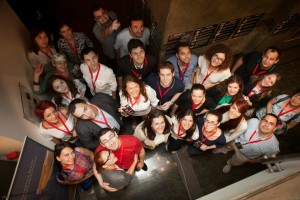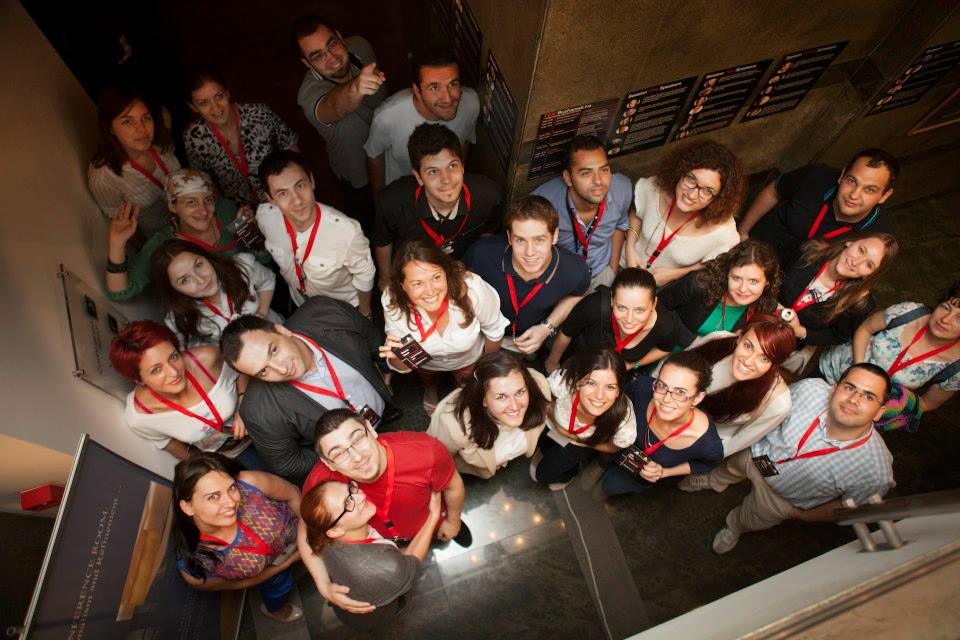
The TEDx brand has become a thriving global community of events in 153 countries with thousands of talented people putting out content every day
We’re not just talking blog posts.
The TEDx community creates talks, promo videos, blog posts, tweets, Vines, Instagram photos, Instagram videos, Flickr photos, websites, Facebook pages, Tumblr feeds, Storify posts, news articles, Livestreams…
You get the idea.
It can be overwhelming, but it’s also exciting.
The key for us has been unearthing the really great stuff, and presenting it on the TEDx blog, Facebook, Twitter and various other platforms in a way that we know our community members will be excited about.
So, how do you make community-created content work for your brand?
1. Set up Systems
Identify what kind of content your community generates, and figure out what belongs where.
Build an editorial calendar to help you understand what kind of content you’ll need spread across your platforms. (You may want to work backwards depending on what stage your community is at – start with what kind of content you do have, and build a calendar that is realistic based on what you already have access to.)
If you have a regular type of content coming in, set up a screening process so that content can be easily sorted and characterized – once you have a base, this makes building the editorial calendar, building strategy and assigning content to a the right platform easier.
At TEDx, we have photos and videos (about 50 – 100 uploaded weekly) coming in to HQ via an established, after-event process. There is a small team that watches, reviews and rates each talk, some to make it to the main TED site, and most are featured in other ways across our platforms. One person reviews photos as they come in, and places them in an internal organization system to be pulled for daily Facebook photo sets.
2. Be Proactive. Always Be Seeking Out Good Content.
While at TEDx we’ve built many places to capture content across the event lifecycle, these systems don’t always capture the most shareable content. Sometimes the best content comes to us in ways we seek out.
We’ll often send out emails or post to our internal community that we are looking for X, Y, Z – items to diversify the editorial calendar, trending topics, un-trending topics. We also search the #TEDx hashtag on Twitter to see what talks are trending, follow up on in person conversations, and rely on forwarded emails from other members of the team and community to uncover fascinating stories. Don’t get locked into the routine processes or a great story may pass you by.
3. Be a Great Editor
When I first arrived at TEDx, our blog operated through Posterous, where any community member could email in posts. Great in theory (with the idea that everyone was a contributor) especially when the community was small, but difficult to maintain as the community grew. Stories were in different formats, there was no common thread (or tagging system) running through the submissions and this made it hard to create a cohesive brand voice on the platform.
A great editor is essential in order to craft an overarching voice and theme, sewing together the threads from the disparate collected content. Otherwise your readers won’t understand the big picture, what the overall spirit of this community is, and then, they simply won’t read.
4. Set a Precedent
When the TEDx program was launched, the team set a precedent by being very involved in the first event – TEDxUSC. In that way, they could show what a TEDx event is, how it worked, and everything else went from there.
To show TEDx community members how to share their own stories, we as a team lead by example – we shared other people’s stories in what we thought were interesting ways. When you visit the TEDx Facebook, blog or Twitter, you get an idea of what kinds of stories we tell, and how we do it. When community members ask how to tell a story, we advise them to take a look at what we’ve done already and submit from there. The blog has tons of solid examples of photo sets, inspiring quotes, and featured designs that community members can use to view their own work through the same lens.
5. Train your Team + Community
Training, along with an ongoing emotional investment in how your community shares what they are up, to is crucial for the long-term success of any community-created content initiative.
When we marked “storytelling as a focus for the TEDx program in 2011, I realized that (especially with a global community) the word “story has a different meaning for everyone. So training the community how we as a brand define “storytelling was crucial to getting the kind of content that we wanted to feature.
We have a document we share on how to use our Tumblr – with tips on what kind of content to share – as well as an internal document for the people that screen the hundreds of TEDx Talks that come in each week, highlighting elements of a great story or alerting them of angles we’re interested in sharing.
If done right, community-curated content can be a great core or auxiliary editorial strategy for any brand — it augments the conversation by highlighting your brand’s biggest fans and expands your content team — and reach — by many.


kassyassin Thanks for sharing!
LCucinotta no probs, great post
dshiao Thanks for sharing my article!
LCucinotta Sure thing – great article.
Beatler Thanks for sharing my article on community-curated content!